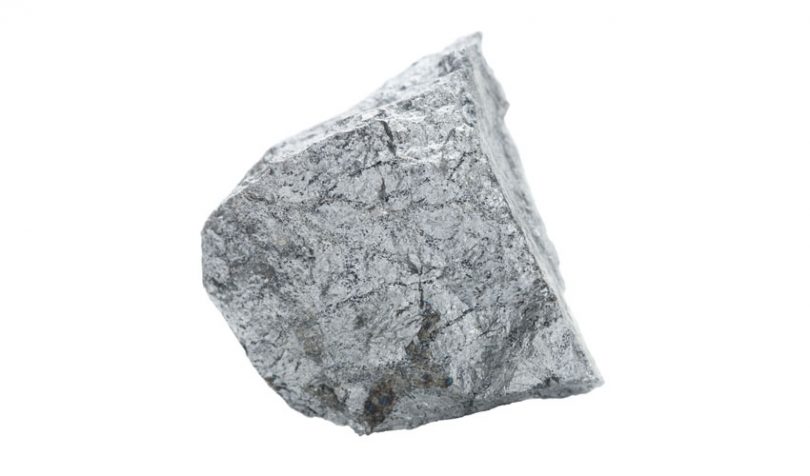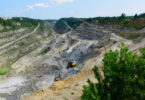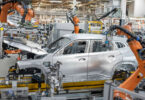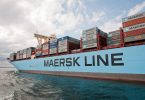On Friday Apple submitted an SEC filing entitled “Conflict Minerals Report“. It gives no pointers about its own blockchain activity, but the company participated in the Responsible Minerals Initiative blockchain group which in December published supply chain guidelines. Two of the important minerals where blockchain is already starting to be deployed are cobalt and tantalum which are both used in batteries.
In the case of cobalt, last month IBM announced a blockchain initiative in the Democratic Republic of the Congo (DRC) with Ford, LG Chem, Huayou Cobalt and RCS Global. Huayou Cobalt is an approved smelter for Apple. Circulor is involved in tracking tantalum in Rwanda with the government and PRG Resources, also an Apple supplier.
The problem
In August Fortune published a report “Blood, Sweat, and Batteries” about cobalt production in the Democratic Republic of the Congo (DRC). The accompanying video explores artisanal or small scale mining in the DRC which is home to two-thirds of the world’s Cobalt reserves. It’s a reminder of what the gold-rush must have been like, with holes manually dug in the ground, hazardous conditions, and children carrying heavy sacks. But even this was the sanitized view of mines that the journalists were allowed to visit.
Watching the video, it becomes apparent that it will be tough to track these informal mining activities where sacks of cobalt are sold to Chinese traders in a marketplace. The bulk of Cobalt mining is more mechanized and formal, including in the DRC, but the most significant risks are at the artisanal mines which account for 20% of DRC’s output.
Apple’s conflict minerals report outlines some of the steps it takes, including monitoring incidents highlighted by bodies such as the iTSCi which seeks to avoid conflict financing, human rights abuses, or other risks such as bribery in mineral supply chains.
The technology company highlighted examples including bribery allegedly involving DRC police, the DRC national army, and the armed Mai Mai group. In the DRC army case, the matter was dealt with, but in the other cases the report states the incidents were closed “due to insufficient evidence or engagement by local authorities”.
The blockchain challenge
The problem is that corrupt data can also be logged on a blockchain. The term “single source of truth” is often associated with blockchain, whereas it’s more accurate to state that blockchain represents a shared version of the data. And there’s no guarantee the data is true.
Furthermore, there’s the issue of how you input data in small-scale mining. It’s often assumed that Africa is backward when it comes to technology, but in many regions, that’s not entirely untrue. However, DRC lags behind many African countries in large part due to extreme poverty. A 2016 GSMA report which was researched by Deloitte found that mobile penetration in the DRC is just 31% and 3G connectivity only 3%. Which means if a smartphone is used for tracking, it will need a wifi signal which is less likely in the middle of a mine.
Cleaning up their act
Once out of the ground, the cobalt has to be processed before use and a large proportion of that happens in China. A key player is Chinese smelter Huayou Cobalt which was referenced in a 2016 Amnesty report as being a major buyer of cobalt from the artisanal mines.
According to the iTSCi, in 2017 Apple estimated that Huayou Cobalt supplied 20% of the cobalt in its batteries, and it temporarily halted artisanal supply from the DRC. As well as being an Apple supplier, Huayou Cobalt is a key company involved in the IBM cobalt initiative for using blockchain for supply chain traceability in the DRC.
But Apple also acknowledges that these small scale mines support hundreds of thousands of livelihoods in a poor country. Hence Apple pledged in 2017 that the mines “will re-enter our supply chain when we are confident that the appropriate protections are in place.”
Impact on demand
In 2018 cobalt prices sky-rocketed to $95,000/ton but have since fallen back to 2016 levels of around $30,000. However, George Heppel from commodity analysts CRU Group recently stated that the price fall was related to excess stockpiles. He said “the long term supply issues around Cobalt metal in particular, haven’t really been solved. We’re still expecting very strong metal demand growth over the next five years. And we’re not seeing any major new source of metal supply over that time.”
But Tesla won’t be part of that future demand. In June last year, Elon Musk tweeted that Tesla will not use any cobalt in next-generation batteries. The decision could be motivated by the price, by the ethical sourcing issues or by technical factors.
The Fortune report highlighted that miners in the DRC are worried about a shift away from Cobalt. So there’s a strong incentive to remove any “ethical” motivations for dropping cobalt and for artisanal mines to comply with traceability initiatives, blockchain or otherwise. Their livelihoods depend on it.







